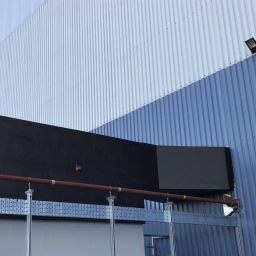prime costs and provisional sums:
If you have ever read a construction contract and you have spent your working life on the tools, you might not be able to make heads or tails of many of the terminologies. It might even appear to have been written in a new language altogether.
Although it may be difficult to understand if you are not well versed in the esoteric contract jargon, you still need to know the terms you are agreeing to, even in a simplified form.
Among the terms that make an appearance often are prime cost and provisional sum. This blog is just to scratch the surface of these two terms and is not intended as a deep dive, but to help educate those who may not know what these terms mean because they never had to deal with them before, such as spending their life on the tools or they have never been explained it properly in simple terms. When it comes to construction contracts, the pen is most definitely mightier than the sword (or the angle grinder *insert tool of choice here)
Introduction about prime costs and provisional sums
There may not be enough details in the project’s specification when it is first drawn up for the client to fully understand what’s needed. It’s difficult to accurately quote a job when the job brief is still vague, and mechanical contractors won’t be able to provide a fixed price.
Therefore, Prime costs and provisional sums are utilised to allow for grey areas to be priced. Mechanical estimators or electrical estimators can make allowances that give the client some guide prices but also protects the M+E subcontractor from having to take on too much risk associated with these works.
Whilst the QS typically administers these costs, the estimator must help formulate them a lot of the time and be involved in them in some shape or form. Therefore both terms are related to mechanical estimating, insulation estimating or any construction estimating for that matter so it’s important to understand the distinction between the two.
Types of Provisional Sums
There are 3 types of Provisional Sums:
Client Provisional Sums: Where the client provides an amount to be added for works yet to be fully defined.
Client PC Sums: Where the client provides an amount to be added for works yet to be fully defined and asks the Contractor to add Mark-up.
Contractor Provisional Sums: Where the contractor allows an amount for an item of works he has insufficient information to price.
Prime Costs:
If you google, construction prime cost, it’s hard to find a definitive answer which clearly states what a prime cost is. Many different explanations of the term and superseded definitions from guidelines provided by RICS, is probably the reason why there is such confusion over what constitutes a PC sum.
According to Mike Harris of Strategus Consulting, which provides Project & Commercial Services to M&E companies:
“In simple terms, a Prime Cost Sum (PC Sum) is an allowance calculated by the client’s Quantity Surveyor / Cost Consultant (PQS) for works to which the contractor is asked to add their mark up for overheads & profit. The problem with PC Sums is that a lot of people (myself included) still think of them in terms of the old SMM7 definition, rather than the current New Rules of Measurement 2 version.
“Under SMM7 (see full definition below), a PC Sum is an amount created by the PQS for a specific specialist sub-contract package (eg: BMS Controls) or specialist materials (eg: fire rated ductwork) to which the contractor adds their mark-up for overheads & profit.
Whereas, under the New Rules of Measurement 2 (again see full definition), a PC Sum is used only for specialist materials, where the PQS gives a material price per unit, to which the contractor adds their mark-up for overheads & profit. Under this definition, it is the material cost only, it excludes labour to install.
“In both cases, the PC Sum is subsequently instructed post-contract, where the PC Sum is omitted & the real cost is inserted with the declared mark up for overheads & profit added.
“It is, therefore, essential to know what definition is being used in the particular contract the project is governed by.”
Definitions
SMM7 describes Prime Cost sums:
“as a sum provided for work or services to be executed by a nominated sub-contractor, a government or a statutory authority or for materials or goods to be obtained from a nominated supplier. Such sum shall be deemed to be exclusive of any profit required and/or attendance to be provided by the main contractor and provision shall be made for the addition thereof where applicable.”
RICS New Rules of Measurement 2 defines Prime Cost Sums as:
“a sum of money included in a unit rate to be expended on materials or goods from suppliers (e.g. ceramic wall tiles at £36.00/m or door furniture at £75.00/door). It is a supply only rate for materials or goods where the precise quality of those materials and goods are unknown. PC Sums exclude all costs associated with fixing or installation, all ancillary and sundry materials and goods required for the fixing or installation of the materials or goods, subcontractor’s design fees, subcontractor’s preliminaries, subcontractor’s overheads and profit, Main Contractor’s design fees, preliminaries and overheads and profit.”
Layman’s terms
Typically a PC sum is used to account for materials and/or subcontractors which have been specifically picked by the end client to be used on the project in whatever capacity they are indicated for.
In the mechanical aspect of the project, this could mean the client specifies that only a certain material of ductwork could be fitted and not only that but that a nominated Ventilation contractor is to be used to install it as well. Now in this example, the costs for using this material and this contractor must be given to the M+E contractor by the MC, who should have been given them by the end client. It is then up to the M&E contractor to transparently mark up this PC sum to include for all OH&P and associated costs for managing and being responsible for delivering the nominated subcontractors works
Work or services must be completed by an approved subcontractor, by a statutory authority or a public enterprise or by someone whose goods or materials are to be obtained from an approved supplier. Approved suppliers or subcontractors should be listed out by the end client and by the MC to the supply chain and so on.
It’s important to note that at the tendering stage, you should also agree on how overheads and profit (OH&P) will be calculated on any prime cost sums or project variations. In most cases, the prime cost will increase between 10% and 20% as a result.
Usually, the contract value can be increased if the costs turn out to be higher in the end but conversely if the actual costs incurred are lower, the contract value will be reduced to suit as well.
Finally, if there are no PC sums given then there is nothing to worry about as you need to be made aware of them by your client, just make sure they are not hidden away somewhere within the tender package somewhere on a spreadsheet or similar!
If you want to estimate a project yourself, you can find estimating software here. We have very favourable discounted rates with a leading estimating software provider in the UK.
Client and Contractor Provisional Sums:
A provisional sum is an allowance or estimate, made for a specific part of the project that is yet to be described in enough detail for contractors to appropriately price.
In Midland Expressway v Carillion, According to Lord Justice May, provisional sums in construction contracts are broadly defined as follows:
“A provisional sum is usually included as a round figure guess, it is included mathematically in the original contract price but the parties do not expect the initial round figure to be paid without adjustment. The contract usually provides for the provisional sum to be omitted and an appropriate valuation of the work actually carried out to be substituted for it.”
The provisional sum is calculated for elements of the project that are not well defined or developed enough with designs and calculations lacking. The given tender information is not thorough enough to allow estimators to perform accurate takeoffs on them and/or price accordingly, mainly because the client is unsure of the work to be done and would prefer the specialist contractor to advise on how they would make an allowance and price in a way which conforms to best practices, British standards so and so forth, according to their experience.
For example, if plumbing pipework is to be retrofitted to an existing building and the routes within the ceiling voids are not known because no surveys have been performed at the tender stage, then the Mechanical estimator could estimate pipework required using specialist mechanical takeoff software and give a provisional sum for installing the pipework within the void, using their past experience of working on similar age and types of building to make an educated guess as it were.
Variations of the provisional sum can be given to account for different scenarios such as the presence of asbestos, out of hours work etc however a single all-encompassing provisional sum is most probably preferred by most clients.
The provisional sum includes both the material and labour charges for the task. There is a certain degree of flexibility to be gained using a provisional sum. Therefore it provides a means for the mechanical estimator to make allowances for the mechanical contractor so they will be covered as long as they do their job properly and issue probing RFI’s to ascertain as much information as possible to make allowances which will cover them in most situations.
The provisional sum can be divided into two main categories according to the RICS (Royal Institute of Chartered Surveyors):
Defined Provisional Sum: A Provisional Sum is defined, when the work involved may not be completely designed, but for which the following is available:
The nature of the work.
- How and where a piece of equipment, for example, would be installed and what else could be attached to it.
- The quantities indicating the scope and extent of the work are known.
- Specific and identified limitations.
- Load calculations and minimum capacity requirements for plant serving the area.
According to the RICS New Rules of Measurement, which has been adopted by JCT, a defined provisional sum can be described as below :
“The nature of construction is understood, that quantities can or will be provided based on the indicated scope and that any restrictions are understood”
Undefined Provisional Sum: When the provisional sum is undefined, it refers to the work wherein neither the scope nor the nature of work is defined or known.
If any work needs to be performed below ground, for example, a contractor cannot estimate the amount of work needed until the ground beneath is accessible and or a survey has been performed which might be too costly at tender stage. Therefore, you can’t expect the contractor to have identified expenses for this project.
Why are the two terms important?
If Prime cost and provisional sums are not understood by the mechanical estimator nor the person signing the contract, it’s most likely going to end up messy, with the subcontractor coming off worse in most cases.
When hiring contractors, end clients rarely know the full scope and specification of their project. It is why prime expenses and tentative estimates should be inserted where gaps exist, without them would be setting a big potential for conflict.
So you owe it to yourself to at least try and get your head around these terms so a) you don’t end up losing money and b) you don’t burn bridges with clients/subcontractors when problems arise on project delivery.
Differences between Provisional Sums and Prime Costs in construction
| Prime Cost | Client Provisional cost | Contractor Provisional Cost |
| Costs are given by the end client to the main contractor and their supply chain upfront in the tender process to make allowances for using specific materials and nominated subcontractors, to be marked up accordingly by those involved directly or indirectly in delivering the said works | Where the client provides an cost to be added for works yet to be fully defined or developed. | Where the MC and/or subcontractor allows an amount for an item of works he has insufficient information to price |
| Specific and clearly defined to make good accurate allowances for even well ahead of project delivery. Gives more cost and programme certainties than provisional sums | Gives more cost and time certainty than a contractor provisional sum but might not be detailed or reasonable enough for potential supply chain contractors to sign up to. |
Allows the contractor/subcontractor to give an estimated cost and install time without locking them into a fixed cost, which might put them off from pricing or pricing reasonably.
|
| Clients know exactly what they will get installed and by whom if they choose to. The risk of underspecification and bad installation is reduced as long as nominated materials and/or subcontractors are of a high enough standard. | Clients can set the expectation for what they require and what the range of approximate costs should fall into. | Subcontractors can indicate how much it would cost for them to supply and install that portion of the work; risk is lowered compared to a fixed price for the subbie. However, for contractors it can leave wriggle room and is open to interpretation and potential increases in costs if the subcontractor is not experienced enough to make an accurate provisional allowance. Knowing your subbie is competent to value such items accurately is key. |
| Helps speed up the tender process by providing supply chain certainty and setting clear, precise expectations from the outset. | Helps speed up the tender process by providing supply chain certainty and setting broadly defined expectations from the outset | Can delay the tender process slightly if the subcontractor is expected to put estimated costs to elements of the works for which they are expected to do provisional designs, for which more time is needed. |
What prime costs and provisional sums have in common –
- They both can go up or down, Provisional and Prime cost sums often cause a contract value to increase or decrease. Contractors and clients alike should know that provisional and prime cost sums could raise or lower the contract sum. If the contract provides for many of these types of sums, the job may not be as attractive and profitable as the job initially seemed if they all come in less than the provisional sums.
- There can often be disagreements and tension between the parties when it comes to deciding the actual cost of or extending the time required to spend provisional sums. This can cause stress for staff which is better off avoided if possible.
- On all sides, client, MC and SC there is more time required for indirect project staff to administer these types of sums as compared to without them. This usually increases overheads and paperwork in relation to the project.
- Provides less certainty than a contract with a fixed price, lump sum.
- Allows sub contractors to price for projects without all the necessary details, rather than turning them down for fear of being locked into a fixed price with no means of compensation for underestimation of the costs required for certain elements of the works.
prime costs and provisional sums In Conclusion:
We always prefer to know what we are paying for and what we get for the said amount. However, in construction, it is not always possible due to a myriad of unknowns that cannot be foreseen at such early stages in the preconstruction phase due to time and cost constraints preventing proper surveys and design work to be done to allow the supply chain who will deliver the project to price with any degree of accuracy or certainty.
We know that to most people this sort of thing can be incredibly frustrating and difficult to wrap your head around. You might not have the time nor the inclination to get involved in such processes.
Alternatively, you can always outsource your estimating to an experienced estimating service like Chase estimating. We are specialists in the following areas
- Mechanical estimating
- Plumbing estimating
- Ventilation estimating
- HVAC estimating
- Electrical estimating
- Insulation estimating
And much much more…..
With over 50+ years of combined experience in our team, we are always ready to help you navigate through any estimating troubles you may be having, whether you’re still on the tools and don’t have time to sit and quote each evening or your estimating department is overworked and burned out.
Just email us your queries at enquiries@chaseestimating.com or call us on 01630 417161 for accurate insulation and M+E estimations and we will be happy to help you, anytime you want. Check out our website www.chaseestimating.com for more information also!
Thank you to Mike Harris from Strategus consulting for guest commenting on this article.


















